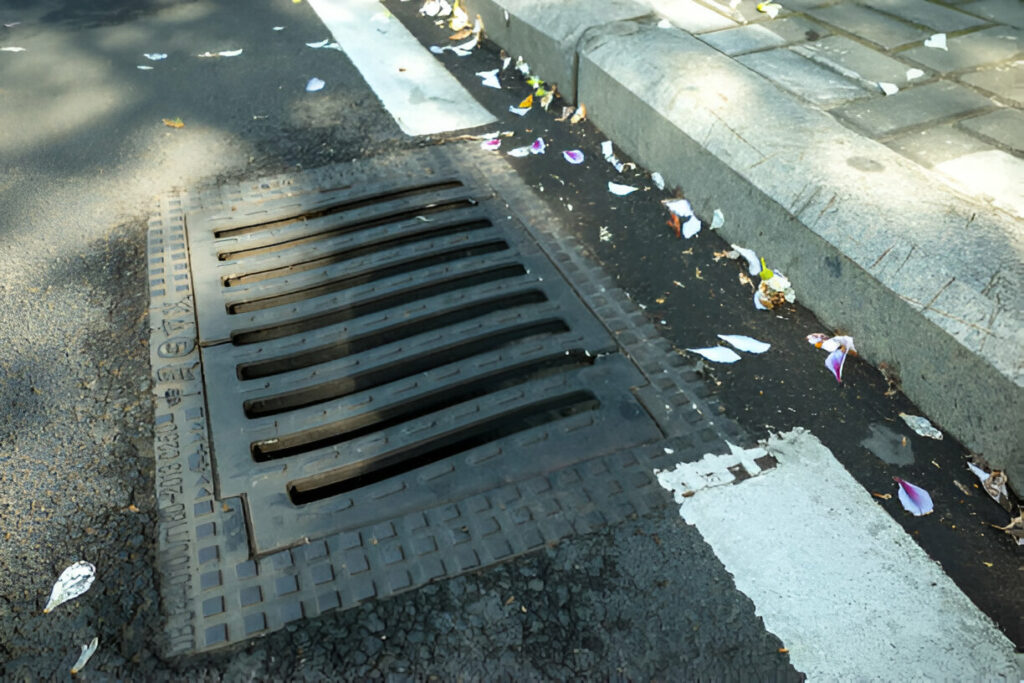Road drains play a crucial role in maintaining the integrity of road infrastructure and ensuring smooth traffic flow. However, when these drains become blocked, they can lead to a range of problems that affect both the environment and public safety. This article explores the causes, effects, and solutions related to blocked road drains, emphasizing the importance of proactive maintenance and community awareness.
Causes of Blocked Road Drains
Debris Accumulation
Road drains often become blocked due to the accumulation of debris such as leaves, twigs, plastics, and trash. These materials can obstruct the flow of water through the drain, leading to backups and potential flooding during heavy rainfall.
Construction Debris
During construction or road repair activities, sediment, gravel, and other construction materials can enter the drainage system, causing blockages over time.
Structural Issues
Aging infrastructure and poor design can contribute to blocked drains. Cracks, corrosion, or collapse of drain pipes reduce their capacity to carry water effectively, increasing the likelihood of blockages.
Lack of Maintenance
Irregular or insufficient maintenance exacerbates the problem of blocked drains. When drains are not cleaned regularly, debris accumulates unchecked, leading to more frequent blockages and potential damage.
Effects of Blocked Road Drains
Flooding Risks
One of the primary consequences of blocked road drains is the increased risk of flooding. When drains cannot effectively channel water away from roads and surrounding areas, water accumulates on the surface, causing localized flooding. This poses dangers to motorists, pedestrians, and nearby properties.
Damage to Infrastructure
Blocked drains can lead to structural damage to roads and pavements. Pooled water can weaken asphalt and concrete, leading to cracks, potholes, and costly repairs. Over time, repeated flooding can compromise the integrity of road surfaces and substructures.
Traffic Disruption
Flooding and water accumulation due to blocked drains disrupt traffic flow, causing delays and congestion. This not only inconveniences commuters but also increases the risk of accidents as drivers navigate through flooded or slippery roads.
Public Safety Concerns
Blocked road drains pose significant safety hazards. Standing water can obscure road markings and hazards, increasing the likelihood of accidents. Moreover, flooded areas may become inaccessible to pedestrians, particularly those with mobility challenges.
Signs of a Blocked Road Drain
Visual Indicators
Identifying a blocked road drain often involves visual inspection. Signs include standing water around drain grates, debris accumulating near drains, or visible sinkholes in the pavement.
Functional Indicators
During rainfall, slow drainage or water pooling around drains indicates potential blockages. Gurgling sounds from drains or foul odors emanating from drainage outlets are also signs that the system is not functioning properly.
Preventive Measures
Regular Maintenance Practices
To prevent blocked road drains, municipalities and responsible authorities should implement regular cleaning and inspection schedules. Clearing debris, sediment, and trash from drains ensures they remain free-flowing.
Use of Grates and Filters
Installing appropriate grates and filters in drain openings can prevent larger debris from entering the drainage system, reducing the likelihood of blockages.
Community Involvement and Awareness
Educating the community about the importance of proper waste disposal and reporting blocked drains can promote responsible behavior. Encouraging residents to report issues promptly helps authorities address blockages before they escalate.
Technological Solutions
Smart Drainage Systems
Advancements in technology enable the deployment of smart drainage systems equipped with sensors. These systems monitor water levels and flow rates in real-time, alerting authorities to potential blockages or drainage issues before they cause problems.
Sustainable Drainage Techniques
Implementing sustainable drainage practices, such as permeable pavements and rainwater harvesting systems, can mitigate the impact of blocked drains. These techniques promote natural water infiltration and reduce reliance on traditional drainage infrastructure.
Role of Authorities
Responsibilities and Regulations
Local authorities are typically responsible for managing and maintaining road drainage systems. Clear guidelines and regulations govern drainage maintenance to ensure compliance and timely response to blockage incidents.
Collaboration and Emergency Response
Effective management of blocked road drains requires collaboration between local governments, emergency services, and community stakeholders. Establishing clear communication channels and emergency response protocols ensures swift action during flood events or drainage emergencies.
FAQs About Blocked Road Drains
-
How often should road drains be inspected?
- Road drains should be inspected regularly, ideally before and after each rainy season, to prevent blockages.
-
Who is responsible for clearing blocked road drains?
- Local municipalities or public works departments are typically responsible for clearing blocked road drains.
-
Can blocked road drains lead to property damage?
- Yes, blocked drains can cause flooding and water damage to nearby properties and infrastructure.
-
What should I do if I notice a blocked drain in my area?
- Report the blocked drain to your local authorities or use designated reporting channels to ensure prompt resolution.
-
How can communities contribute to preventing blocked road drains?
- Communities can contribute by practicing responsible waste disposal, reporting blockages promptly, and participating in drainage maintenance initiatives.
Additional Causes of Blocked Road Drains
Natural Debris
In addition to man-made debris, natural elements such as fallen leaves, branches, and silt can accumulate in road drains, especially during seasons with heavy foliage or after storms. These materials hinder water flow and contribute to blockages over time.
Illegal Dumping
Improper disposal of waste, including dumping of large items like furniture or appliances, can block drains and exacerbate existing debris accumulation. This irresponsible behavior not only clogs drains but also poses environmental hazards.
Root Infiltration
Tree roots seeking moisture can infiltrate drain pipes through cracks or joints, causing blockages and structural damage. Root intrusion is a common issue in older drainage systems and requires specialized techniques for mitigation.
Conclusion!!
Addressing the issue of blocked road drains is crucial for maintaining road safety, protecting infrastructure, and preserving the environment. By understanding the causes, recognizing the effects, and implementing preventive measures and technological solutions, communities can mitigate the impact of blocked drains and promote sustainable urban development.




